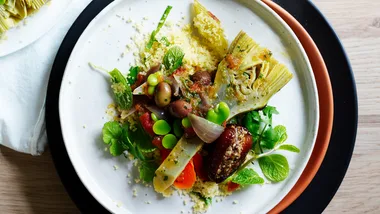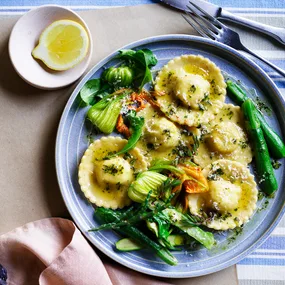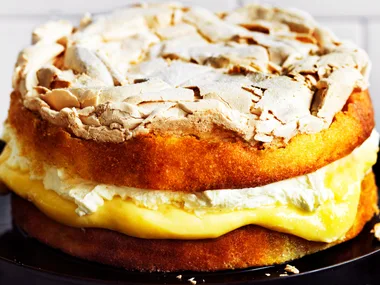Ingredients
Method
For chilli aïoli, combine chillies, garlic and oil in a small saucepan and cook over low-medium heat until deep golden (15 minutes). Using a slotted spoon, transfer chilli and garlic to a mortar to cool. Leave oil in pan to cool completely (1-1½ hours). Add 1 tsp salt flakes to mortar with chilli and garlic; pound to a paste with a pestle. Transfer to a bowl; whisk in egg yolks and lemon juice. Whisking continuously, slowly add cooled oil until emulsified; season to taste.
Pull tentacles and innards from body of calamari, reserving tentacles. Carefully remove ink sacs from innards (discard innards) and reserve. Clean and halve calamari, remove and discard wings; peel away thin skin. Cut hoods into 2cm x 8cm strips; pat dry thoroughly with paper towel.
Place calamari in a bowl and place a sieve over bowl. Break ink sac into sieve (you’ll need 1 tbsp ink). Using a spoon, toss calamari in ink until completely coated; cover and refrigerate until required.
Heat oil to 180°C in a large, deep saucepan. Toss calamari through flour, shake off excess; deep-fry, in batches, until just cooked (1-2 minutes; be careful, hot oil will spit). Remove with a slotted spoon, drain on paper towel; season to taste and keep warm.
Fry parsley in the oil until crisp (30 seconds; be careful, hot oil will spit). Remove with a slotted spoon and drain on paper towel. Serve calamari topped with fried parsley, with chilli aïoli on the side for dipping.
This recipe also calls for cooling (see method).
If desired, substitute chickpea (besan) flour to make this recipe gluten-free.
Note
 Ben Dearnley
Ben Dearnley








